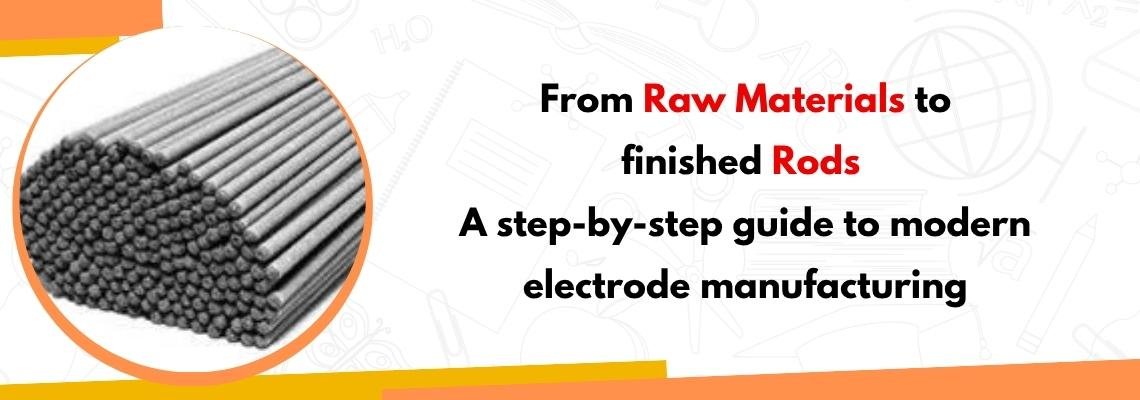Electrode manufacturing process guide begins with selecting the right raw materials. A clear understanding of each step helps ensure high-quality rods that meet industry demands.
Understanding Raw Materials
Every electrode starts with two main parts: the core wire and the coating materials. The core wire is usually made of mild steel, stainless steel, or specialty alloys. The coating often includes minerals, binders, and sometimes additives for improved performance. At this stage, suppliers test each material batch for purity and consistency. Clean, well-tested inputs lay the foundation for reliable electrodes.
Preparing the Core Wire
Once raw materials pass inspection, the core wire is drawn to the required diameter. Drawing involves pulling a thicker metal rod through a series of dies that gradually reduce its size. This process strengthens the metal and gives it a smooth surface. Skilled operators monitor tension and temperature during drawing to prevent defects like cracks or uneven thickness.
Coating Process
Coating transforms a simple metal wire into a welding electrode. First, the core wire passes through a slurry made of ground minerals and water. This slurry helps the coating stick firmly to the wire. Next, the wire moves into a compaction machine where rollers press the wet coating around it. This step controls the coating’s thickness and uniformity. After compaction, the wire often goes through a secondary coating stage to add special ingredients, such as rust inhibitors or stabilizers, depending on the electrode’s purpose.
Drying and Baking
A properly coated wire is damp and fragile until it dries. It travels through a drying tunnel where warm air removes moisture. Precise temperature and airflow settings are crucial: too hot, and the coating can crack; too cool, and the coating stays soft. After initial drying, many plants bake the rods in ovens at higher temperatures. Baking strengthens the bond between wire and coating and activates certain chemical agents in the mix. This two-stage heat treatment ensures a coating that resists flaking during handling and provides a stable arc during welding.
Cutting and Marking
After drying, long coated wires arrive at cutting machines. These machines slice the wire into rods of the desired length. Each rod is then marked with its specification code, size, and manufacturer logo. Clear, durable markings help welders choose the right electrode for their job and track material origin. Automated systems apply paint or laser etching to ensure labels stand up to storage and transport.
Testing and Quality Control

Quality control is vital. Every batch of rods undergoes tests to check tensile strength, coating adhesion, moisture content, and welding performance. In welding tests, experienced welders use the rods on sample pieces to inspect arc stability, bead appearance, and slag removal. Any batch that fails to meet standards is set aside for rework or recycling. This strict testing ensures that only reliable electrodes leave the factory.
Packaging and Dispatch
Once rods pass all tests, they move to packaging. Automated lines group rods into bundles, which go into moisture-resistant boxes. Proper packaging prevents damage and exposure to humidity, preserving rod quality until use. Finally, boxes are palletized and sent to warehouses or directly to customers. Efficient dispatch systems and clear labeling help companies track orders and deliver on time.
A step-by-step approach to making welding electrodes—from choosing raw materials to final dispatch—ensures reliable performance on the job. Each stage, from drawing the core wire to coating, drying, testing, and packaging, plays a key role in delivering strong, stable rods. For high-quality electrodes you can trust, turn to Logos Weld Products.




**mindvault**
mindvault is a premium cognitive support formula created for adults 45+. It’s thoughtfully designed to help maintain clear thinking
**sugarmute**
sugarmute is a science-guided nutritional supplement created to help maintain balanced blood sugar while supporting steady energy and mental clarity.
**gl pro**
gl pro is a natural dietary supplement designed to promote balanced blood sugar levels and curb sugar cravings.
**prostadine**
prostadine is a next-generation prostate support formula designed to help maintain, restore, and enhance optimal male prostate performance.
**vitta burn**
vitta burn is a liquid dietary supplement formulated to support healthy weight reduction by increasing metabolic rate, reducing hunger, and promoting fat loss.
**glucore**
glucore is a nutritional supplement that is given to patients daily to assist in maintaining healthy blood sugar and metabolic rates.
**prodentim**
prodentim an advanced probiotic formulation designed to support exceptional oral hygiene while fortifying teeth and gums.
**synaptigen**
synaptigen is a next-generation brain support supplement that blends natural nootropics, adaptogens
**nitric boost**
nitric boost is a dietary formula crafted to enhance vitality and promote overall well-being.
**mitolyn**
mitolyn a nature-inspired supplement crafted to elevate metabolic activity and support sustainable weight management.
**wildgut**
wildgutis a precision-crafted nutritional blend designed to nurture your dog’s digestive tract.
**zencortex**
zencortex contains only the natural ingredients that are effective in supporting incredible hearing naturally.
**yusleep**
yusleep is a gentle, nano-enhanced nightly blend designed to help you drift off quickly, stay asleep longer, and wake feeling clear.
**breathe**
breathe is a plant-powered tincture crafted to promote lung performance and enhance your breathing quality.
**pineal xt**
pinealxt is a revolutionary supplement that promotes proper pineal gland function and energy levels to support healthy body function.
**energeia**
energeia is the first and only recipe that targets the root cause of stubborn belly fat and Deadly visceral fat.
**prostabliss**
prostabliss is a carefully developed dietary formula aimed at nurturing prostate vitality and improving urinary comfort.
**boostaro**
boostaro is a specially crafted dietary supplement for men who want to elevate their overall health and vitality.
**potent stream**
potent stream is engineered to promote prostate well-being by counteracting the residue that can build up from hard-water minerals within the urinary tract.
**hepato burn**
hepato burn is a premium nutritional formula designed to enhance liver function, boost metabolism, and support natural fat breakdown.
**hepato burn**
hepato burn is a potent, plant-based formula created to promote optimal liver performance and naturally stimulate fat-burning mechanisms.
**flowforce max**
flowforce max delivers a forward-thinking, plant-focused way to support prostate health—while also helping maintain everyday energy, libido, and overall vitality.
**prodentim**
prodentim is a forward-thinking oral wellness blend crafted to nurture and maintain a balanced mouth microbiome.
**cellufend**
cellufend is a natural supplement developed to support balanced blood sugar levels through a blend of botanical extracts and essential nutrients.
**revitag**
revitag is a daily skin-support formula created to promote a healthy complexion and visibly diminish the appearance of skin tags.
**neuro genica**
neuro genica is a dietary supplement formulated to support nerve health and ease discomfort associated with neuropathy.
**sleep lean**
sleeplean is a US-trusted, naturally focused nighttime support formula that helps your body burn fat while you rest.